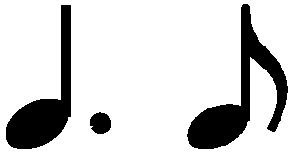



One should consider whether the notation of GE may reflect the notation of [A]. This would most probably mean that Chopin imagined striking the quavers in the right hand simultaneously with the last quavers of the second triplets of the left hand, and thus as one-sixth of the figure  . Notation of that type, in which the manner of execution of one of the voices is specified only approximately by the rhythmic values but shown precisely by the graphic relation with the remaining voices, is often encountered in Chopin’s works, e.g. in Nocturne in C minor Op. 48 no. 1, bars 53-71 or Nocturne in F sharp major Op. 15 no. 2, bars 33-48. However, this seems highly unlikely in the case of Nocturne in C sharp minor, as:
. Notation of that type, in which the manner of execution of one of the voices is specified only approximately by the rhythmic values but shown precisely by the graphic relation with the remaining voices, is often encountered in Chopin’s works, e.g. in Nocturne in C minor Op. 48 no. 1, bars 53-71 or Nocturne in F sharp major Op. 15 no. 2, bars 33-48. However, this seems highly unlikely in the case of Nocturne in C sharp minor, as:
- in Nocturne in D flat major no. 2, belonging to the same opus, we see in bars 35-36 similar examples of imprecise notation of GE, this time definitely erroneous and inconsistent with the hand-written base text;
- the notation of bars 37-45 of Nocturne in C sharp minor requires striking of each semiquaver of the right hand simultaneously with the sixth triplet quaver of the left hand; it would be hard to understand why a strikingly different notation should mean the same execution;
- in FE, which must have been fairly meticulously corrected by Chopin, the quavers in the right hand are placed in accordance with their regular rhythmic value; Chopin did not question that notation in any of the three teaching copies.
A similar problem occurs in bar 48 and bars 50, 51 and 53-62.
Compare the passage in the sources »
category imprint: Graphic ambiguousness; Interpretations within context; Differences between sources
issues: GE revisions, Dotted rhythms and triplets
notation: Rhythm



